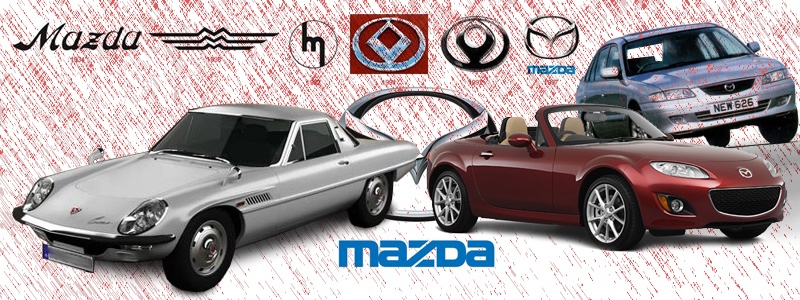 |
 |
|
1966 - 1972
The Cosmo was Mazda's rather futuristic car and was designed from the ground up. It was perceived as Mazda's first foray into the world of high-performing excitement machines. More>> |
 |
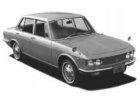 |
|
1967 - 1974
In many regards the 1500 was the car for the time, bridging the gap between large family 6 cylinders and the small 4 cylinder variety, this market segment dominated by the Japanese but now being challenged by locals such as the HB Torana and Ford Escort. More>> |
 |
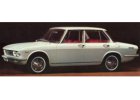 |
|
1967 - 1974
Even a superficial examination of the Mazda 1500 DeLuxe showed this was a quality made car, parallel perhaps with BMW in Germany or Rover in the UK, although it lacked the Rover 2000's technical enterprise. More>> |
 |
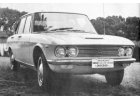 |
|
1968 - 1974
The Mazda 1800 was aptly called "The Leading Lady", it at the time heading the magnificent range of Mazda Sedans. By putting a powerful 1800cc 104 bhp engine into the delightfully styled Mazda 1500 body shell, the engineers at Toyo Kogyo had given the chassis the type of power it deserved, and needed. More>> |
 |
 |
|
1968 - 1974
In 1968 the Mazda 1200 set a new bench mark for affordable quality in the small car segment, it then being the cheapest 4 door car on the market. The all-alloy engine was specifically designed by the Mazda engineers for the 1200, and the 73 horsepower engine was enough to push the car to 90 miles an hour, for those who dared. More>> |
 |
 |
|
1968 - 1974
The Mazda R100 Rotary Coupe was powered by the dream engine of the 1960's - an engine so small two would fit into the space of most big sixes, an engine so smooth you needed a rev counter to tell it was going. And the most amazing fact of all - it developed the horsepower of piston engines two to three times its size. More>> |
 |
 |
|
1970 - 1977
TAlthough the Mazda 1500/1800 series went over pretty well with Australian motorists, it was never a great seller in Japan. To address this, Mazda released the Capella – which they believed would be a better competitor and take the fight up to the big sellers from opposition Japanese companies Toyota, Datsun and Mitsubishi. More>> |
 |
 |
|
1970 - 1978
The Mazda RX2 is credited with being the first "normal" car to be fitted with a rotary engine. Available as a 4 door sedan or 2 door coupe, the RX2 quickly gained a reputation for good performance and poor petrol economy. More>> |
 |
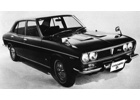 |
|
1971 - 1978
The Capella GSII was based on the Capella GS couple, powered by a 120bhm version of the type 12A twin rotot Wankel - at the time this engine being the smoothest and most powerful of the Mazda rotary family. More>> |
 |
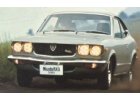 |
|
1972 - 1978
The good folks at Mazda have proven to be rather adept at manufacturing extrodinarily exciting cars - today's RX8 and MX5 both being brilliant cars to drive while remaining relatively affordable. And back in 1972 the affordable pocket rockets were undoubtedly the Mazda RX2 and RX3. More>> |
 |
 |
|
1972 - 1977
The Mazda RX4, known in its home market the Luce Rotary, was one hell of a car, whether it be in sedan or hardtop form. The RX4 featured the 130 bhp Capella Wankel engine, and unlike the previous RX3, this was the very first Mazda to have been designed by Toyo Kogyo as exclusively Wankel powered. It was a bigger car than the Capella, being within a whisker of the TC Cortina in external and internal dimensions. More>> |
 |
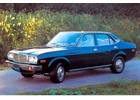 |
|
1973 - 1977
Mazda's 929 was their top of the range 1800cc-engined sedan - capable as a family car yet retaining just enough executive overtones to make it a little special. But 1800 was too few "cc" for those who really enjoyed their driving. If you pushed the car hard, the fuel economy would fall through the floor, and there was little to be gained anyway. Instead, the car suited those who enjoyed the gentle, easy approach. More>> |
 |
 |
|
1975 - 1977
The intelligent and advanced concept of global outsourcing applied to the development of the Mazda Roadpacer AP offered a high-quality small volume mass-produced vehicle with a shortened development time and less cost in terms of investment. Well - that was the theory. More>> |
 |
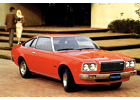 |
|
1975 - 1981
The Mazda 121 was, to our eyes, one of the best looking cars from the late 1970s. It seemed to buck the trend of the Japanese to embellish their cars with fancy scrolls and plenty of bright work. It was obviously aimed at the American market, hence the opera window behind the door, which was a US design trend at the time, along with the pronounced grille that finds favour in the States. More>> |
 |
 |
|
1977 - 1981
The 929L's design was American inspired, with stacked rectangular headlights and a large chrome grille. A more efficient 2.0 litre L4, producing 90 hp (66 kW) with a single-barrel carb replaced the existing engines. First presented in Japan in October 1979 was a facelifted version with large, rectangular headlights and a more orthodox appearance. More>> |
 |
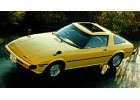 |
|
1979 - 1985
By the early 1970's Mazda had proved its commitment to the rotary engine, in 1971 alone Mazda building over 200,000 rotary-powered vehicles. However the road for the rotary has never been smooth, and for Mazda things took a turn for the worse when the oil crisis of 1973 turned peoples attention to the poor fuel economy of the rotary. More>> |
 |
 |
|
1979 - 1982
The Mazda 626 series 1 proved to be a durable and reliable car, and was influential in developing Mazda's enviable reputation for quality. More>> |
 |
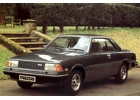 |
|
1979 - 1982
Our review of the Mazda 626 was penned many years ago – and it was favourable partly because we were very familiar with one particular example that proved its reliability and solid construction – engine notwithstanding. But as good as the 626 was, there was one model that really was worthy of superlatives – the Super Deluxe Coupe. More>> |
 |
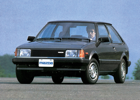 |
|
1980 - 1984
Mazda’s 4th generation 323, the BD, was released on October 10, 1980. It came hot on the heels of Mazda investing $A471 million at their Hiroshima plant during 1979 / 1980 - which had saddled the company with huge long term debt, which effectively prevented the company from joining the Japanese rush into US production. More>> |
 |
 |
|
1982 - 1987
The Series 2 model 626 was a big step forward, in layout, design, drive configuration and style. It won the “Car of the Year Japan” award in 1982, and Car of the Year by Wheels magazine for 1983. It came in fifth in the 1984 European Car of the Year, the highest finish so far for a Japanese car. With the press falling over themselves with praise for the new model, it was a shoe in to sell well throughout the world. More>> |
 |
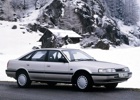 |
|
1987 - 1991
The Series 3 Mazda 626 was an absolute legend of a car. Released in May 1987 it had big shoes to fill, considering the previous model was the recipient of so many awards, including the coveted Wheels “Car of the Year”. More>> |
 |
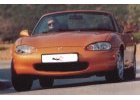 |
 |
1988 -
The MX5 owes much to the Lotus Elan, as that is where its designers sought inspiration - although Mazda always wanted to ensure that its car would be more reliable and solid than the little Lotus. They also wanted to ensure their new sports car offered modern "sedan" type comfort levels, despite the inevitable noise and climate problems associated with a "rag top". More>> |




